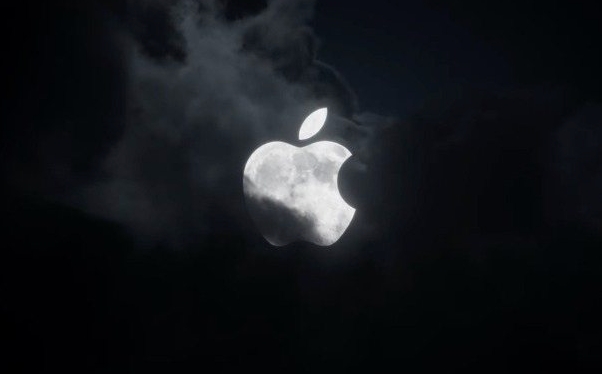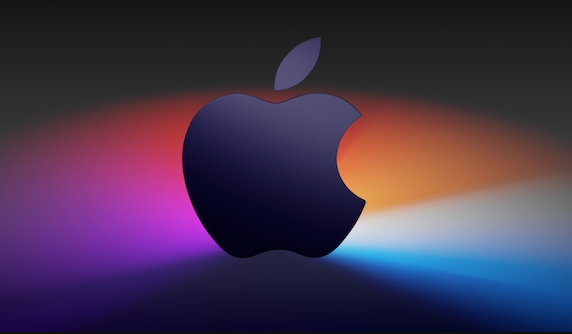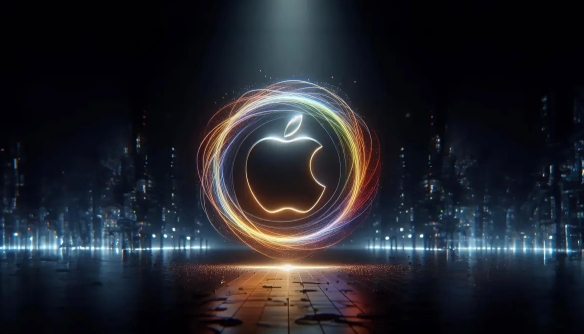How to create a macOS bootable installer in Windows?
Jul 13, 2025 am 01:10 AMMaking a macOS bootable installer on Windows is not officially supported, but can be implemented through third-party tools. First, prepare a USB drive above 16GB, macOS installation image (.dmg/.iso) and tools such as TransMac or balenaEtcher; secondly, use TransMac to right-click the USB drive and select "Restore with Disk Image" to write the image, or use balenaEtcher to select ISO files and target disk to write; finally note that the USB drive must be in GPT format, and install Hackintosh, you also need to manually configure EFI boot and use boot tools to bypass restrictions.

Creating a macOS bootable installer (Bootable Installer) is not directly supported on Windows, because Apple's official tools such as the "macOS Installation Assistant" only run on macOS systems. But if you really need to make a macOS boot disk on a Windows computer, for example, in order to install Hackintosh, you can still achieve it through some workarounds.

Here are some common and feasible practices:

Prepare the tools and files you need
To start making a macOS boot disk, you need to prepare the following things:
- A USB drive of at least 16GB (high-speed USB drive is recommended to increase writing speed)
- A Windows computer
- macOS installation image (usually a .dmg or .iso file, or an installation package extracted by .pkg)
- A tool that can operate on Windows, for example:
- TransMac (paid but simple)
- balenaEtcher (free, suitable for writing to mirrors)
- Or command line tools such as
dd(via WSL)
Note: The downloaded macOS image must be ensured to be reliable, otherwise it may contain malware or will not boot properly.

Use TransMac to create a macOS boot disk
This is one of the most convenient ways to do on Windows right now. TransMac supports writing .dmg or .iso files of macOS directly to USB flash drives and automatically set to bootable format.
The steps are as follows:
- Insert the USB flash drive and back up the data in it (which will be formatted)
- Open TransMac, right-click your USB drive, and select “Restore with Disk Image”
- Find your prepared macOS installation image (.dmg or .iso file)
- Wait for the write to be completed, this process may take 10 to 20 minutes, depending on the USB speed
Once completed, your USB drive becomes a macOS boot disk that can be used to install Hackintosh.
Write to ISO images using balenaEtcher
If you get the ISO image file of macOS, you can use balenaEtcher to write it:
- Download and install balenaEtcher
- Open the program, click "Flash from file" and select your macOS ISO file
- Select the target USB drive
- Click "Flash!" to start writing
This method is suitable for situations where ISO has been extracted, but not all macOS ISOs can be used directly for startup, and some require additional bootloaders.
Additional Notes
Although the above method can help you make a macOS boot disk on Windows, there are several details that are easily overlooked:
- The USB drive must be formatted as a GUID Partition Table (GPT) to be correctly recognized by macOS. This step is usually done automatically by the tool, but in some cases it needs to be manually set.
- If you are using Hackintosh to install, in addition to the boot disk itself, you also need to add the correct EFI boot configuration. This part usually requires manual editing of the contents of the EFI partition
- The macOS installer won't be allowed to run on non-Apple hardware by default, so you may also need to patch or use the Clover/OpenCore boot tool to bypass the restrictions
Basically that's it. Although you cannot create a macOS boot disk natively like on macOS, this can also be done on Windows with the help of third-party tools. As long as the mirror is fine and the tools are used correctly, the success rate is still very high.
The above is the detailed content of How to create a macOS bootable installer in Windows?. For more information, please follow other related articles on the PHP Chinese website!

Hot AI Tools

Undress AI Tool
Undress images for free

Undresser.AI Undress
AI-powered app for creating realistic nude photos

AI Clothes Remover
Online AI tool for removing clothes from photos.

Clothoff.io
AI clothes remover

Video Face Swap
Swap faces in any video effortlessly with our completely free AI face swap tool!

Hot Article

Hot Tools

Notepad++7.3.1
Easy-to-use and free code editor

SublimeText3 Chinese version
Chinese version, very easy to use

Zend Studio 13.0.1
Powerful PHP integrated development environment

Dreamweaver CS6
Visual web development tools

SublimeText3 Mac version
God-level code editing software (SublimeText3)

Hot Topics
 How to handle high DPI display in C?
Apr 28, 2025 pm 09:57 PM
How to handle high DPI display in C?
Apr 28, 2025 pm 09:57 PM
Handling high DPI display in C can be achieved through the following steps: 1) Understand DPI and scaling, use the operating system API to obtain DPI information and adjust the graphics output; 2) Handle cross-platform compatibility, use cross-platform graphics libraries such as SDL or Qt; 3) Perform performance optimization, improve performance through cache, hardware acceleration, and dynamic adjustment of the details level; 4) Solve common problems, such as blurred text and interface elements are too small, and solve by correctly applying DPI scaling.
 How to uninstall MySQL and clean residual files
Apr 29, 2025 pm 04:03 PM
How to uninstall MySQL and clean residual files
Apr 29, 2025 pm 04:03 PM
To safely and thoroughly uninstall MySQL and clean all residual files, follow the following steps: 1. Stop MySQL service; 2. Uninstall MySQL packages; 3. Clean configuration files and data directories; 4. Verify that the uninstallation is thorough.
 Detailed explanation of the installation steps of MySQL on macOS system
Apr 29, 2025 pm 03:36 PM
Detailed explanation of the installation steps of MySQL on macOS system
Apr 29, 2025 pm 03:36 PM
Installing MySQL on macOS can be achieved through the following steps: 1. Install Homebrew, using the command /bin/bash-c"$(curl-fsSLhttps://raw.githubusercontent.com/Homebrew/install/HEAD/install.sh)". 2. Update Homebrew and use brewupdate. 3. Install MySQL and use brewinstallmysql. 4. Start MySQL service and use brewservicesstartmysql. After installation, you can use mysql-u
 macOS: System Architecture and Core Components
Apr 28, 2025 am 12:05 AM
macOS: System Architecture and Core Components
Apr 28, 2025 am 12:05 AM
The system architecture of macOS includes hardware abstraction layer, XNU core, I/OKit, core services and Aqua user interface. Core components include the startup process, the APFS file system, and SystemIntegrityProtection. Performance optimization and best practices involve hardware configuration, software setup, and development skills.
 macOS and Linux: Compatibility and User Experience
Apr 30, 2025 am 12:05 AM
macOS and Linux: Compatibility and User Experience
Apr 30, 2025 am 12:05 AM
macOS and Linux have their own advantages in compatibility and user experience. macOS has excellent compatibility within the Apple ecosystem, and the user experience is simple and intuitive; Linux has outstanding hardware compatibility and software flexibility. The user experience varies from distribution to distribution, emphasizing personalization and control.
 What are the cross-platform development environments in C?
Apr 28, 2025 pm 09:24 PM
What are the cross-platform development environments in C?
Apr 28, 2025 pm 09:24 PM
Cross-platform development in C is recommended to use VisualStudioCode, CLion and QtCreator. 1. VisualStudioCode is lightweight and flexible, suitable for multi-platform development, but the initial configuration is more complicated. 2. CLion integrates CMake, suitable for cross-platform projects, but licenses are expensive. 3.QtCreator supports cross-platform development, with built-in Qt library, but the learning curve is steep.
 The difference between programming in Java and other languages ??Analysis of the advantages of cross-platform features of Java
May 20, 2025 pm 08:21 PM
The difference between programming in Java and other languages ??Analysis of the advantages of cross-platform features of Java
May 20, 2025 pm 08:21 PM
The main difference between Java and other programming languages ??is its cross-platform feature of "writing at once, running everywhere". 1. The syntax of Java is close to C, but it removes pointer operations that are prone to errors, making it suitable for large enterprise applications. 2. Compared with Python, Java has more advantages in performance and large-scale data processing. The cross-platform advantage of Java stems from the Java virtual machine (JVM), which can run the same bytecode on different platforms, simplifying development and deployment, but be careful to avoid using platform-specific APIs to maintain cross-platformity.
 macOS vs. Linux: Exploring the Differences and Similarities
Apr 25, 2025 am 12:03 AM
macOS vs. Linux: Exploring the Differences and Similarities
Apr 25, 2025 am 12:03 AM
macOSandLinuxbothofferuniquestrengths:macOSprovidesauser-friendlyexperiencewithexcellenthardwareintegration,whileLinuxexcelsinflexibilityandcommunitysupport.macOS,developedbyApple,isknownforitssleekinterfaceandecosystemintegration,whereasLinux,beingo






